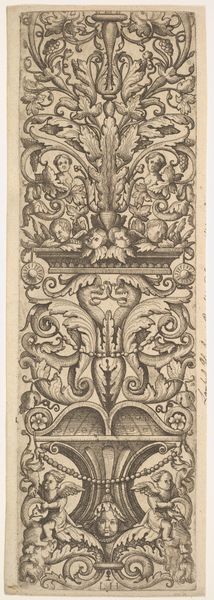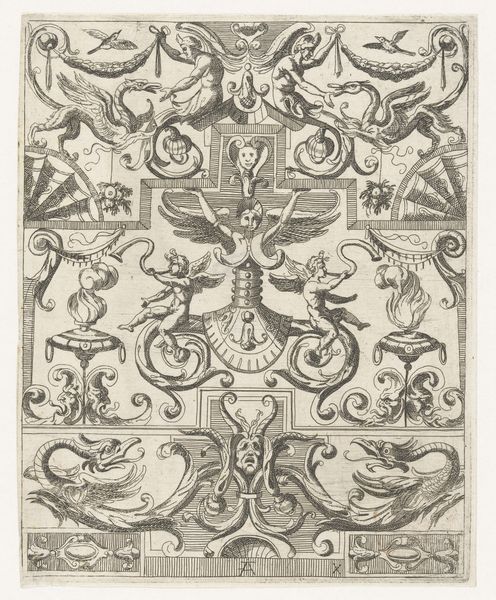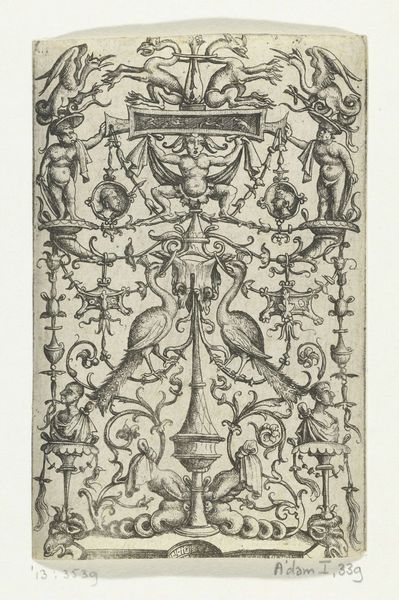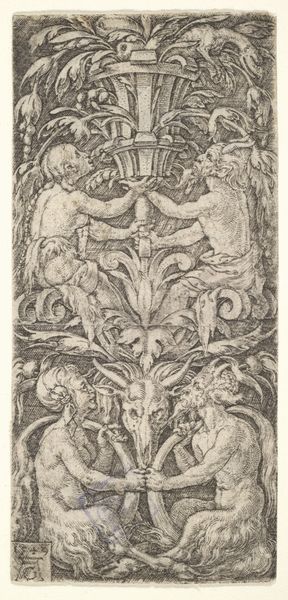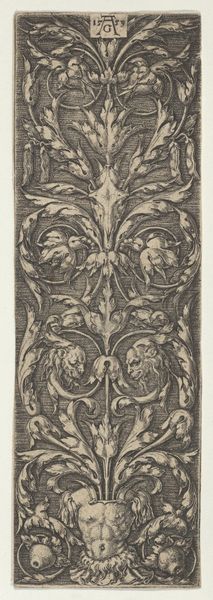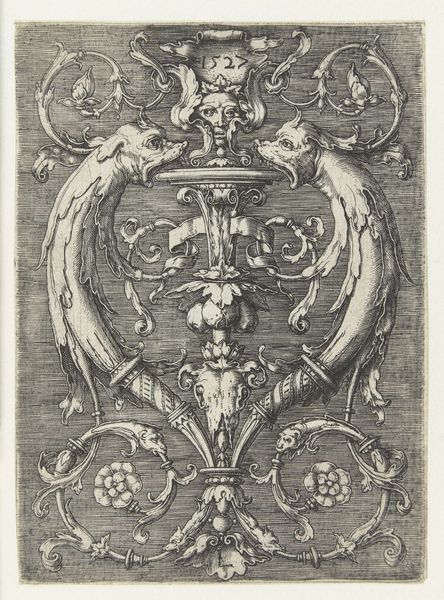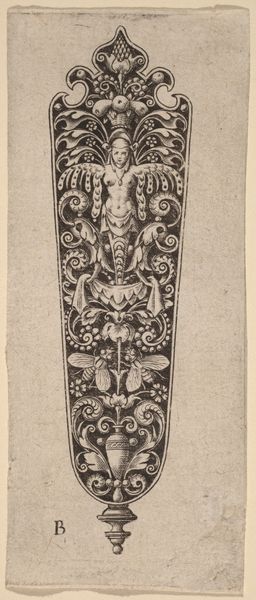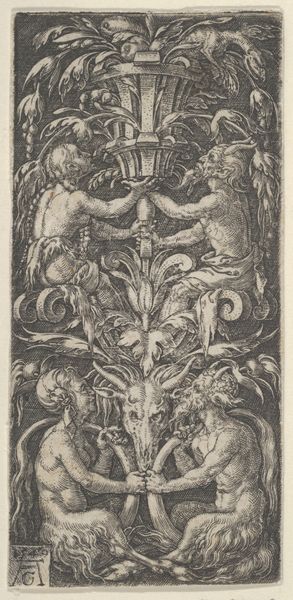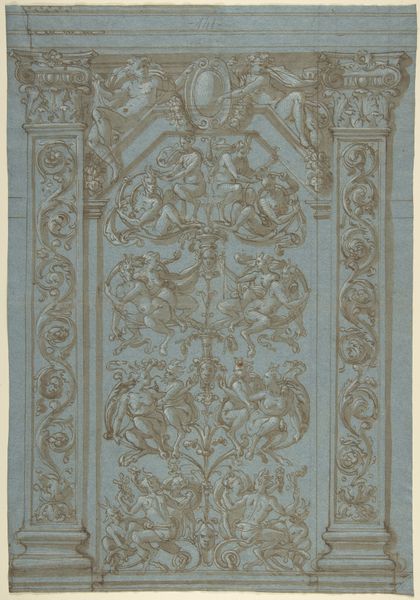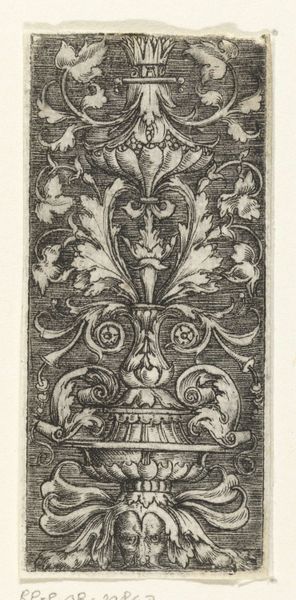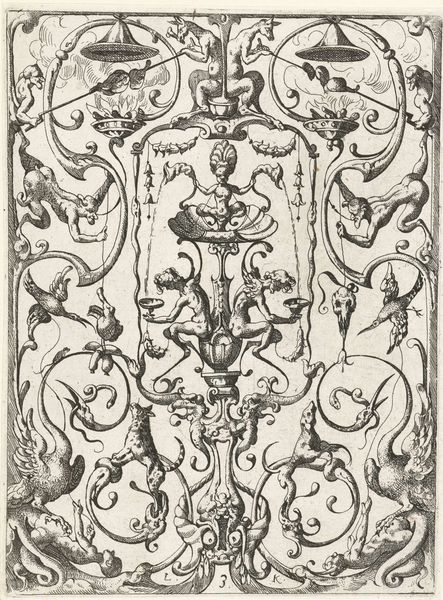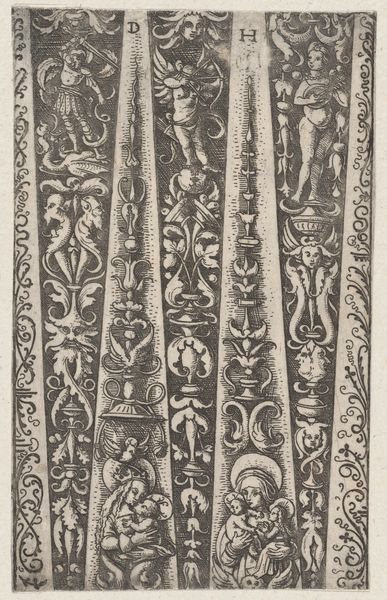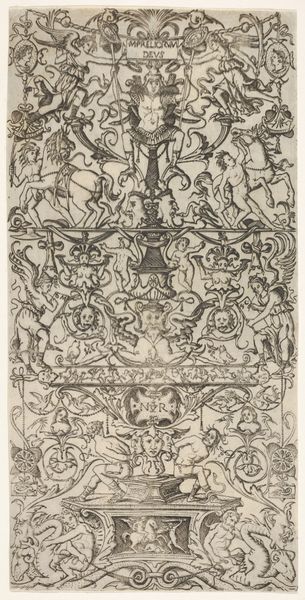
print, engraving
#
pen drawing
# print
#
old engraving style
#
figuration
#
11_renaissance
#
linocut print
#
line
#
history-painting
#
engraving
Dimensions: height 229 mm, width 153 mm
Copyright: Rijks Museum: Open Domain
Curator: This engraving, “Drie vlakdecoraties op een blad” or “Three Surface Decorations on a Sheet," by Lambert Hopfer, dates from 1520 to 1530. You can see it here at the Rijksmuseum. Editor: The overwhelming complexity is the first thing that strikes me. So many strange figures, symmetrical patterns – almost a sense of visual overload. Curator: Absolutely. Hopfer masterfully utilizes the technique of engraving to create intricate detail, but beyond its aesthetic features, let's consider its historical function. As the title indicates, these aren't stand-alone artworks. They’re designs. Editor: Ah, so these served more as templates or source material? The repetitive linear patterns are definitely well-suited to mass production. I am struck by how these designs bridge what we think of now as "art" versus "craft" since it seems that this design might have been employed in any number of products during the Renaissance. What were the raw materials likely utilized for a design like this? Curator: That's precisely it. While intended as reproducible models, we find this sheet a sophisticated arrangement. Observe how Hopfer balances the horror vacui—the fear of empty space—with an underlying sense of order. Editor: You can really see the artist's labor embedded within those lines. Each hatch mark and deliberate cut represents hours of skilled work using sharp tools on a metal surface to establish matrices. One can envision the hand of the artisan. The material production certainly elevates this image. Curator: Agreed. It serves a dual purpose, demonstrating artistry within design. It reveals cultural attitudes concerning surface ornamentation of the period, offering a fascinating insight into Renaissance aesthetics. Editor: So even as a design print, Hopfer’s work reflects broader shifts in the material culture of 16th-century design through visual expression. What appears as just an aesthetic exercise opens this view onto something so rich. Curator: Exactly. Thank you for underscoring those observations. It adds greater meaning to the viewing experience of the work.
Comments
No comments
Be the first to comment and join the conversation on the ultimate creative platform.
